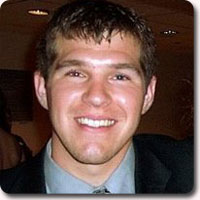 Steve Beck is the Co-founder and CEO of SpringHill Equity Partners, an impact investment manager providing capital and support to growing businesses supplying basic goods and services to low-income households in Africa. After spending most of his career as a management consultant, Steve recently launched into the world of social venture capital. His goal? To more intentionally integrate his business “head” and philanthropy “heart.” He’d probably encourage others to do the same.
Steve Beck is the Co-founder and CEO of SpringHill Equity Partners, an impact investment manager providing capital and support to growing businesses supplying basic goods and services to low-income households in Africa. After spending most of his career as a management consultant, Steve recently launched into the world of social venture capital. His goal? To more intentionally integrate his business “head” and philanthropy “heart.” He’d probably encourage others to do the same.
TILE: How would you describe social venture capital in your own terms?
Steve: Social venture capital is about providing money (“growth capital”) and lots of help to fast-growing, for-profit ventures, with the intention of generating significant social (and/or environmental) benefits along with a financial return to the investors. This whole area has been struggling for a few years now to find language to describe what it is and does. The name that seems to have taken hold is “impact investing” — that is, investing with the intention to deliver social and/or environmental benefits in addition to financial returns. Think of it as venture capital to “not-just-for-profit” enterprises.
TILE: Why is impact investment important? In other words, why the middle ground between philanthropy and for-profit investment? Why not keep dollars for giving and dollars for investing in separate jars?
Steve: Well, we have kept them in “separate jars” for too long and look where that binary thinking has got us. Global problems of chronic poverty, conflict, disease, oppression and injustice are simply too big and too urgent to be left to charity and the NGO community, which have neither the resources nor the reach to address these issues at scale. Impact investing has the potential to tap into the much larger pool of for-profit investment capital and unleash entrepreneurial creativity and the disciplines of the market to address these issues in a much more dignifying, sustainable, and scalable way.
An ‘impact investment’ example might help here. Nearly half the world’s population uses open fires to cook their food, with devastating consequences. Cooking in the global south presents a triple threat: to health (cooking over an open wood fire is like smoking 40 cigarettes…each meal!), personal economics (poor families spend up to a third of their annual income on cooking fuel or spend hours each day foraging for wood), and the environment via deforestation and global carbon emissions.
SpringHill invested in a business in Kenya that is producing and distributing fuel-efficient cookstoves to low-income households. Each stove saves half the fuel and eliminates 85% of the toxic smoke emissions. It’s a product that saves health, money, and the environment. The business is designed to be profitable by selling the stoves at $14 each — not an “impulse buy” for the families that need them, but one that is within reach, and in any case will pay for itself within about 8 weeks from the fuel saving. The business is on track to sell 80,000 stoves in its first full year of operation. As a business, it’s accountable to the consumer (not to a donor) — the product had better be good or we will go out of business. If the product performs well, the business will be profitable and we’ll have sufficient capital to continue to grow the business from Kenya to neighboring countries. As stove sales expand, we make a growing dent in the triple threat described above…and we make money doing it, thereby attracting other entrepreneurs and investors into the market for a better stove.
TILE: Is there a place for young people in the social investment world?
Steve: Yes, there are numerous places for young people in this world — and it’s essential they take them up. But first let’s widen the lens beyond the narrow “world” of financial capital. Whether or not they have access to substantial financial means, each of TILE’s members possesses extraordinary assets that can be intentionally invested for the benefit of others. I’m talking about knowledge, skills, gifts, aptitudes, time, energy, perspective, and optimism — much more important currencies than dollars and cents. Every time you intentionally invest your assets to address social problems you are a social investor. And young people are often the best entrepreneurs because they are not locked into conventional thinking and are prepared to take more risks early in their careers.
TILE: How did you end up where you are today?
Steve: Via a circuitous route: 18 years in business, 3 years’ graduate study, 6 years in professional philanthropy, and now 2 years in social venture capital. Having studied international development, I emerged from college with an idealistic, “save-the-world” ambition and attitude. (I actually wrote a paper for one of my undergraduate classes entitled “World Hunger: Causes and Solutions”…that’s how idealistic I was). I got an entry-level job in management consulting and, without a lot of forethought, built a career analyzing markets and enterprises, (eventually) providing strategic advice to leaders of some of the world’s largest companies. My job was to help them decide “where to play” and “how to win”. After 18 years in business, I had an opportunity to give more direct expression to my ideals and went into the professional philanthropy world, running a company that applied investment discipline to grant-making aimed at addressing problems in some of the world’s hardest places. I did that for six years before starting an impact investment firm focused on Africa. My answer to question #2 explained one of the reasons for this move. In hindsight, I’m grateful for the experience I had working with leaders of firms that were competing in the world’s most competitive markets – this was a great training ground for what was to follow.
TILE: What’s the best advice you would give to your teenage self?
Steve: Be an intentional investor. I’m thinking of two things in particular:
One, invest in significance over success. Don’t let your concept of success be defined by the size of your bank balance and the consumer goodies you own. Be intentional about what’s important to you. This means finding ways to give practical expression to your values. If you say you’re concerned about slavery and human trafficking, examine your consumption expenditures. Can you buy fair trade products…products that are free of slave labor?
Two, invest with conviction. The Irish poet, Brendan Kennelly wrote, “If you want to serve the age, betray it.” “Betray the age” means exposing the culture’s moral blind spots. What might those be? Maybe it’s our refusal to treat every person with equal worth and dignity? Or our obsession with our rights rather than our obligations?
Our youth — YOU — are best placed to expose the blind spots of today’s culture. So, harness and direct that rebellious energy (I was a rebellious teen) onto something that is worth spending your life doing…or un-doing.
>> TILE brings you exclusive opinions, explanations, and interviews from experts in every industry. To read more, click on Ask the Experts in the TILE Library.
Have a burning question or an expert you’d like to see interviewed? Just Ask TILE!
 Josh Weinstein is the founder of YouAre.TV. YouAre.TV allows anyone to be on TV and interactive gameshows via webcam. He previously
Josh Weinstein is the founder of YouAre.TV. YouAre.TV allows anyone to be on TV and interactive gameshows via webcam. He previously
 W. Christopher Stewart is a philosophy professor at Houghton College in Houghton, NY, where he teaches courses on aesthetics, the history of philosophy, Nietzsche, Kierkegaard, philosophy of science, and business ethics. He is the author of, among other things, an essay on magic and technology forthcoming in The Hobbit and Philosophy,and earlier co-authored an essay on magic, science, and the ethics of technology for Harry Potter and Philosophy. He has served as a consultant for Pfizer, where he advised a team of marketing experts on the relationship between clinical research, consumer behavior, and
W. Christopher Stewart is a philosophy professor at Houghton College in Houghton, NY, where he teaches courses on aesthetics, the history of philosophy, Nietzsche, Kierkegaard, philosophy of science, and business ethics. He is the author of, among other things, an essay on magic and technology forthcoming in The Hobbit and Philosophy,and earlier co-authored an essay on magic, science, and the ethics of technology for Harry Potter and Philosophy. He has served as a consultant for Pfizer, where he advised a team of marketing experts on the relationship between clinical research, consumer behavior, and  Pamela Vail is a performer, choreographer, improviser and teacher. She is an Assistant Professor of Dance at Franklin & Marshall College, and also performs with several professional dance companies and creates her own choreography. To sample some of her work, visit
Pamela Vail is a performer, choreographer, improviser and teacher. She is an Assistant Professor of Dance at Franklin & Marshall College, and also performs with several professional dance companies and creates her own choreography. To sample some of her work, visit  Evan Piekara is an alumnus of Teach For America, a national organization that works to ensure educational opportunities for students of all backgrounds. During his 4 years as a corps member, he taught 6th and 7th grade in the South Bronx. He’s also worked as an Institute Staff Member, helping to train the 2008 and 2009 corps. As a result of his classroom experiences, he developed some interesting views on education in America and the importance of gaining financial understanding at a young age.
Evan Piekara is an alumnus of Teach For America, a national organization that works to ensure educational opportunities for students of all backgrounds. During his 4 years as a corps member, he taught 6th and 7th grade in the South Bronx. He’s also worked as an Institute Staff Member, helping to train the 2008 and 2009 corps. As a result of his classroom experiences, he developed some interesting views on education in America and the importance of gaining financial understanding at a young age. Steve Beck is the Co-founder and CEO of
Steve Beck is the Co-founder and CEO of  Freddy Dico is the co-founder of Sir New York, a modern menswear label that launched in Spring 2010. He’s from Macau, but grew up in San Francisco. And before getting into the world of design, he was actually a star student in the biochemistry program at U.C. Davis. Since switching gears and graduating from
Freddy Dico is the co-founder of Sir New York, a modern menswear label that launched in Spring 2010. He’s from Macau, but grew up in San Francisco. And before getting into the world of design, he was actually a star student in the biochemistry program at U.C. Davis. Since switching gears and graduating from  Sharna Goldseker is the director of 21/64 – a nonprofit that helps families make important decisions about philanthropy and helps young donors find their philanthropic voice. Sharna is an expert on the way giving fits into wealth and family relationships. In addition to consulting and speaking extensively on generational transitions, she also facilitates
Sharna Goldseker is the director of 21/64 – a nonprofit that helps families make important decisions about philanthropy and helps young donors find their philanthropic voice. Sharna is an expert on the way giving fits into wealth and family relationships. In addition to consulting and speaking extensively on generational transitions, she also facilitates